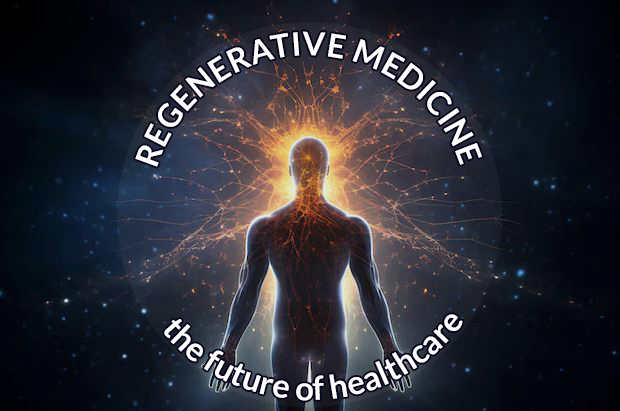Regenerative Medicine:
Healing the Body from Within
Regenerative medicine is a groundbreaking field that harnesses the body’s natural ability to heal itself. By leveraging the power of regenerative cells, tissue engineering, and advanced biomaterials, regenerative medicine aims to restore function and structure to damaged tissues and organs. This innovative approach holds immense potential to transform the way we treat a variety of medical conditions, from chronic diseases to traumatic injuries. In this blog, we will explore the different ways regenerative medicine aids in healing the human body, offering hope for more effective and long-lasting treatments.

Promoting Cellular Repair and Growth
At the core of regenerative medicine is the concept of cellular repair and growth. Regenerative cells, which have the unique ability to develop into different types of cells, play a crucial role in this process. When introduced into damaged tissues, regenerative cells can replace dead or dysfunctional cells, thereby restoring the tissue’s normal function. For instance, in conditions such as heart disease, where cardiac muscle cells are damaged, regenerative cell therapy can help regenerate healthy heart tissue, improving the heart’s ability to pump blood and reducing symptoms.
Enhancing Tissue Regeneration
Beyond cellular repair, regenerative medicine also focuses on tissue regeneration. Techniques such as tissue engineering involve creating scaffolds that mimic the structure of natural tissues. These scaffolds can be seeded with cells and growth factors, encouraging the formation of new tissue. This approach is instrumental in treating injuries that involve significant tissue loss, such as severe burns or bone fractures. By facilitating the growth of new, healthy tissue, regenerative medicine can significantly improve healing outcomes and restore function to damaged areas.
Reducing Inflammation and Scarring
Chronic inflammation and scarring are major obstacles to effective healing. Regenerative medicine offers solutions to these challenges by modulating the body’s immune response. For example, mesenchymal regenerative cells (MSCs) have anti-inflammatory properties and can promote tissue repair by secreting bioactive molecules. These properties make MSCs particularly valuable in treating conditions characterized by excessive inflammation, such as rheumatoid arthritis or inflammatory bowel disease. By reducing inflammation and minimizing scarring, regenerative therapies can enhance the body’s natural healing processes and improve recovery times.
Accelerating Wound Healing
Wound healing is a complex process that involves multiple stages, including inflammation, tissue formation, and remodeling. Regenerative medicine can accelerate this process by providing the necessary cellular and molecular tools to support each stage of healing. For example, platelet-rich plasma (PRP) therapy, which involves using a concentration of a patient’s own platelets, can enhance the healing of chronic wounds and injuries. PRP contains growth factors that stimulate cell proliferation, collagen synthesis, and tissue regeneration, making it a powerful tool in regenerative medicine.
Treating Neurodegenerative Diseases
Regenerative medicine is also making strides in the treatment of neurodegenerative diseases, such as Parkinson’s and Alzheimer’s. These conditions are characterized by the progressive loss of neurons, leading to cognitive and motor impairments. Regenerative cell therapy offers the potential to replace lost neurons and restore neural function. By differentiating into specific types of neural cells, regenerative cells can integrate into existing neural networks and improve brain function. While still in the experimental stages, these therapies hold promise for reversing the effects of neurodegeneration and improving the quality of life for patients.
Supporting Organ Transplantation
Organ transplantation is often the last resort for patients with end-stage organ failure. However, the shortage of donor organs and the risk of rejection pose significant challenges. Regenerative medicine aims to address these issues by developing bioengineered organs and tissues that can be used for transplantation. Using a patient’s own cells, scientists can create functional organ replacements that are less likely to be rejected by the immune system. This approach not only increases the availability of organs but also improves the long-term success of transplants.

Regenerative medicine represents a paradigm shift in healthcare, offering innovative solutions to some of the most challenging medical conditions. By harnessing the body’s natural healing capabilities, regenerative therapies can promote cellular repair, enhance tissue regeneration, reduce inflammation, accelerate wound healing, treat neurodegenerative diseases, and support organ transplantation. As research and technology continue to advance, the potential for regenerative medicine to revolutionize healthcare becomes increasingly evident. This promising field holds the key to unlocking new, effective treatments that can improve patient outcomes and transform lives.
Healing the Body from Within

